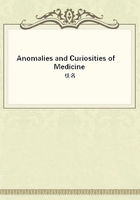
第421章
Chronologic Table of the Principal Plagues.--In December, 1880, H. P. Potter, F.R.C.S., published a chronologic table of some of the principal plagues on record. In comments on his table, Potter says that he has doubtless included mention of many plagues which, although described under that name, are probably a dissimilar disease, writers having applied the terms pestilential and pestilent in a generic sense to diseases specifically different. It must also be remembered that, in some cases, death must have been due to famine, want, and privation, which are so frequently coexistent with pestilence. Following the idea of Hecker, the dancing manias have been included in this table.
{table omitted}
Small-pox.--From certain Chinese records it appears that small-pox, or a disease with similar symptoms, was known in China before the Christian era, and it was supposed to have been known at a very early period in India. Most likely it was introduced into Europe in the second century by a Roman army returning from Asia. Before the sixth century, the terrible century of the great plague, there seem to be no records of small-pox or other eruptive fevers. Neither Hippocrates, Galen, nor the Greek physicians who practiced at Rome, mention small-pox, although it is now believed that the Emperor Marcus Aurelius died of this disease. According to Dupony, the first document mentioning variola was in 570 A.D., by Marius, a scholar of Avenches, in Switzerland. ("Anno 570, morbus validus cum profluvio ventris, et variola, Italiam Galliamque valde affecit.") Ten years later Gregory of Tours describes an epidemic with all the symptoms of small-pox in the fifth reign of King Childebert (580); it started in the region of Auvergne, which was inundated by a great flood;he also describes a similar epidemic in Touraine in 582. Rhazes, or as the Arabs call him, Abu Beer Mohammed Ibn Zacariya Ar-Razi, in the latter part of the ninth century wrote a most celebrated work on small-pox and measles, which is the earliest accurate description of these diseases, although Rhazes himself mentions several writers who had previously described them, and who had formulated rules for their cure. He explained these diseases by the theory of fermentation, and recommended the cooling treatment. Adams remarks that although it is probable that small-pox existed for ages in Hindoostan and China, being completely isolated in those countries from the European world, it was not introduced into the West until the close of the seventh century. Imported into Egypt by the Arabians, it followed in the tracks of their conquests, and was in this way propagated over Europe. The foregoing statement disagrees with Dupony and others. It is well known that small-pox was prevalent in Europe before Rhazes's description of it, and after the Crusades it spread over Central and Western Europe, but did not extend to the northern countries until some years later. In 1507 the Spaniards introduced it into San Domingo, and in 1510 into Mexico, where it proved a more fatal scourge than the swords of Cortez and his followers, for according to Robertson it swept away in Mexico three millions and a half of people. In 1707 it appeared in Iceland, and carried off more than one-fourth of its inhabitants;in 1733, according to Collinson, it almost depopulated Greenland.
The Samoyeds, Ostiaks, and other natives of Eastern Siberia, have frequently suffered from devastating epidemics. In Kamchatka the disease was introduced in 1767, and many villages were completely depopulated. According to Moore, at the beginning of the eighteenth century nearly one-fourteenth of the population died from small-pox in England, and at the end of the century the number of the victims had increased to one-tenth. In the last century the statement was made in England that one person in every three was badly pock-marked. The mortality of the disease at the latter half of the eighteenth century was about three to every thousand inhabitants annually. India has always been a fertile ground for the development of small-pox, and according to Rohe the mortality from small-pox has been exceedingly great for the past twenty years. From 1866 to 1869, 140,000 persons died in the Presidencies of Bombay and Calcutta, and several years later, from 1873 to 1876, 700,000 died from this disease. China, Japan, and the neighboring countries are frequently visited with small-pox, and nearly all the inhabitants of Corea are said to bear evidences of the disease. In the Marquesas Islands one-fourth of the inhabitants had fallen victims to the disease since 1863. It was first introduced into the Sandwich Islands in 1853, and it then carried off eight per cent of the natives.
Australia, Tasmania, New Zealand, and the Fiji Archipelago have to the present day remained exempt from small-pox; although it has been carried to Australia in vessels, rigorous quarantine methods have promptly checked it. On the American continent it was believed that small-pox was unknown until the conquest of Mexico. It has been spread through various channels to nearly all the Indian tribes of both North and South America, and among these primitive people, unprotected by inoculation or vaccination, its ravages have been frightful.
That small-pox a disease so general and so fatal at one time--has, through the ingenuity of man, in civilized communities at least, become almost extinct, is one of the greatest triumphs of medicine.